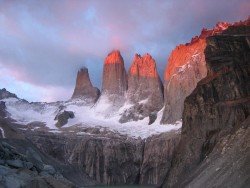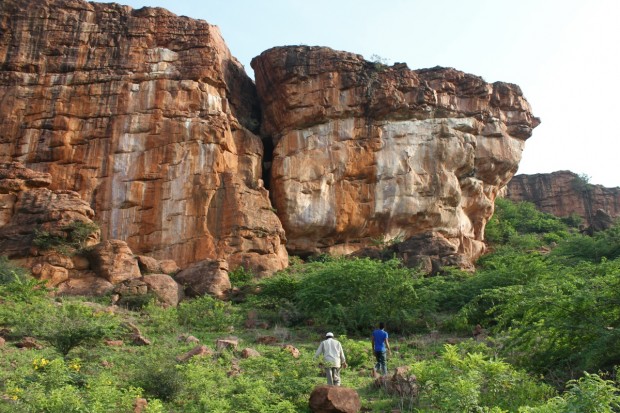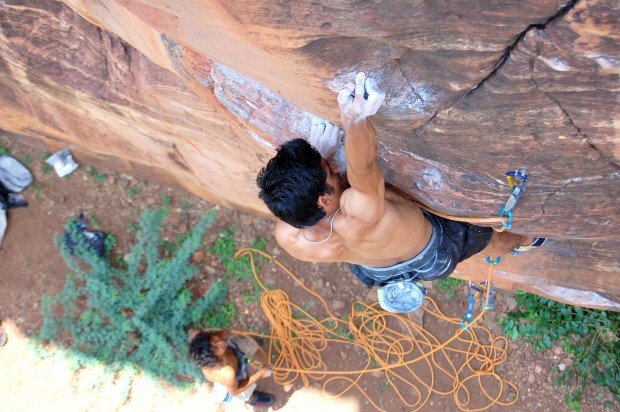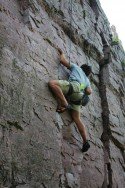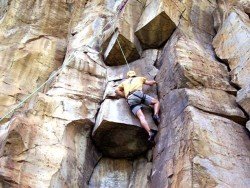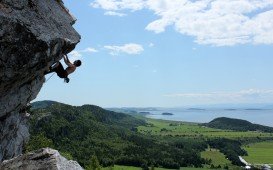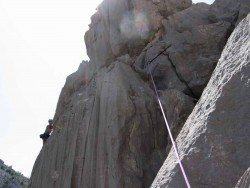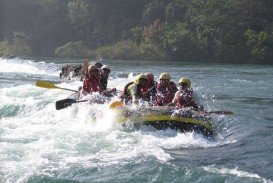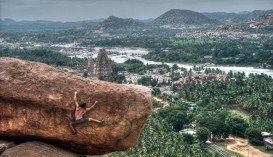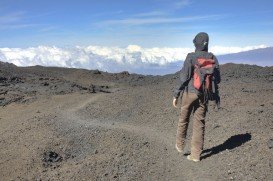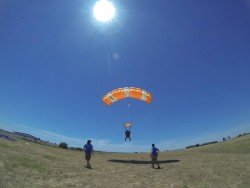Located at the mouth of a narrow canyon, between two rocky hills and surrounding the Agastya Tirtha water reservoir in Karnataka State, Badami was once the powerful capital of the Chalukya Empire. Widely known for its rock cut temples and sculptures, as well as the amazing red sandstone cliffs, Badami is considered to be among the top destinations in India for both spiritual and adventure seekers.
As rock climbing in India is a fairly new activity, from a geological point, Badami is the perfect playground for the sport enthusiasts and has become over the past few years, a hot spot among local and foreign climbers.
There are more than 150 bolted routes on the rocks of Badami to choose from and six different and challenging climbing areas, most of them located close to each other. Some of the major climbing walls include the Temple Area with 17 routes that grade from 4 to 7c, the Pousser au Cul area with short routes that grade from 5b to 7a, the Badami Deluxe area with long and challenging routes that range from 5c to 7b+ and a cave ideal for bouldering and the Saraswathi Area with an amazing bolted route and many more that grade from 6b to 7c.
The best season for rock climbing in Badami is from October until February, when the weather is cool and dry. The monsoon season is between May and November, while during summer months temperatures can reach up to 104°F/40°C, making climbing almost impossible.
The Badami climbing routes are now enjoying world attention among sport climbing enthusiasts and there is much potential in the area, as it is considered to be the climbing Mecca of Asia. Keep in mind that there are no schools or shops in Badami for the time being, so if you are planning to visit the area alone, be prepared in regards of gear. Avoid climbing during or after rainfall, because the sandstone crags become soft and slippery.
